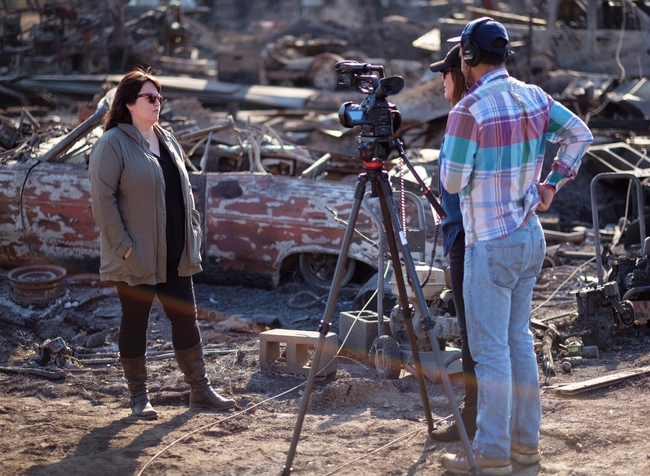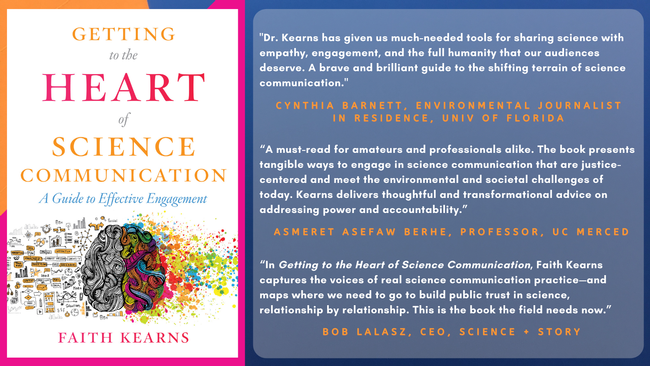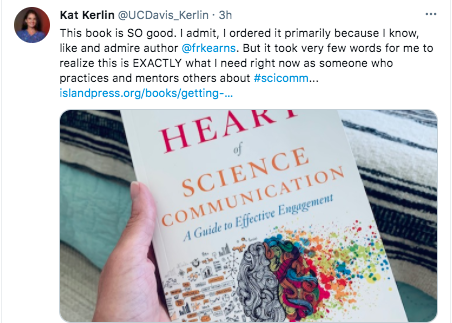Communicating about climate crisis and other scientific issues requires more than facts
New book offers advice for discussing misconceptions and oversimplifications
Research can inform people to take appropriate action to solve problems, but effectively communicating is key. Faith Kearns, who works on emotional and contentious water-related issues such as climate change, drought and wildfire, has learned firsthand that the way scientists communicate can deeply affect people and communities.
Kearns, an academic coordinator for the California Institute for Water Resources at University of California Agriculture and Natural Resources, has written about what she has learned in 25 years of practice in a new book, Getting to the Heart of Science Communication: A Guide to Effective Engagement from Island Press. The book includes on-the-ground experiences of many science communicators, including those working in Cooperative Extension.
“The book offers an on-the-ground perspective on communicating emotional and contentious topics and is filled with concrete examples from practitioners, which is different from many science communication books written by journalists or researchers,” Kearns said. “It is centered around practical tools like relating, listening, working with conflict, and understanding trauma, all with an eye toward equity and justice.”
Among the many issues addressed in the book – ranging from food security to disasters – climate change is one of the biggest. Meteorologist and climate journalist Eric Holthaus notes in the foreword that giving people scientific facts isn't convincing many people that there is a climate crisis, much less solving the climate emergency. “This crisis is getting worse not because of a deficit of information, after all, but because of a deficit of action,” writes Holthaus.
Grist journalist Kate Yoder wrote, “For a long time, scientists have relied on a ‘deficit' model of communication. The idea is that if people are given enough facts and data about, say, climate change, then they'd accept the science— in a logical, rational way — and decide to take action. This idea isn't necessarily wrong, but it ignores the messiness of the world and the role that emotions play in guiding decisions.”
Kearns begins the book with a personal anecdote that changed the way she thought about science communication. After she and her colleagues gave a presentation on wildfire preparation to residents in Mendocino County, an emotional audience member explained to Kearns that he had labored to keep a recent wildfire from consuming his property and the way the researchers had presented their information without attention to the fact that a fire had just burned through the area had been re-traumatizing.
“Many communicators, including myself, have neglected other pieces of communicating that don't have to do with providing information,” Kearns said. “It's so important to know who you are in conversation with and what they've been through. Their history, communities, and personal experiences impact how they will receive scientific information. One of the most important skills you can have as a science communicator is to be able to listen well.”
Jonathan Wai reviewed Kearns' book in Science. He wrote: “The book offers a view from the front lines of science communication, profiling practitioners who explain their journeys and share stories of relationship building and community engagement. Framing herself as a scientist turned science communicator, Kearns describe her vision for the future of the field, one in which relational communication is fundamental.”
Kearns acknowledges in the preface that a single book cannot be all things to all people. “My hope is that I can fairly treat the argument that emotion, conflict, and power struggles are already present in science communication and engagement work and that ignoring them is counterproductive,” she wrote.
Getting to the Heart of Science Communication is written for science communicators and scientists working at research institutions, government agencies, consulting firms or nonprofit organizations. In addition, it will be of interest to those working with scientists including journalists and decision-makers. People interested in science will also find much to consider in this updated view of the science communication landscape.
The 280-page paperback is published by Island Press and can be ordered for $30 (use code HEART for a publisher discount) at https://islandpress.org/books/getting-heart-science-communication and wherever books are sold.
For more about science communication, see Kearns' blog at https://faithkearns.substack.com.




